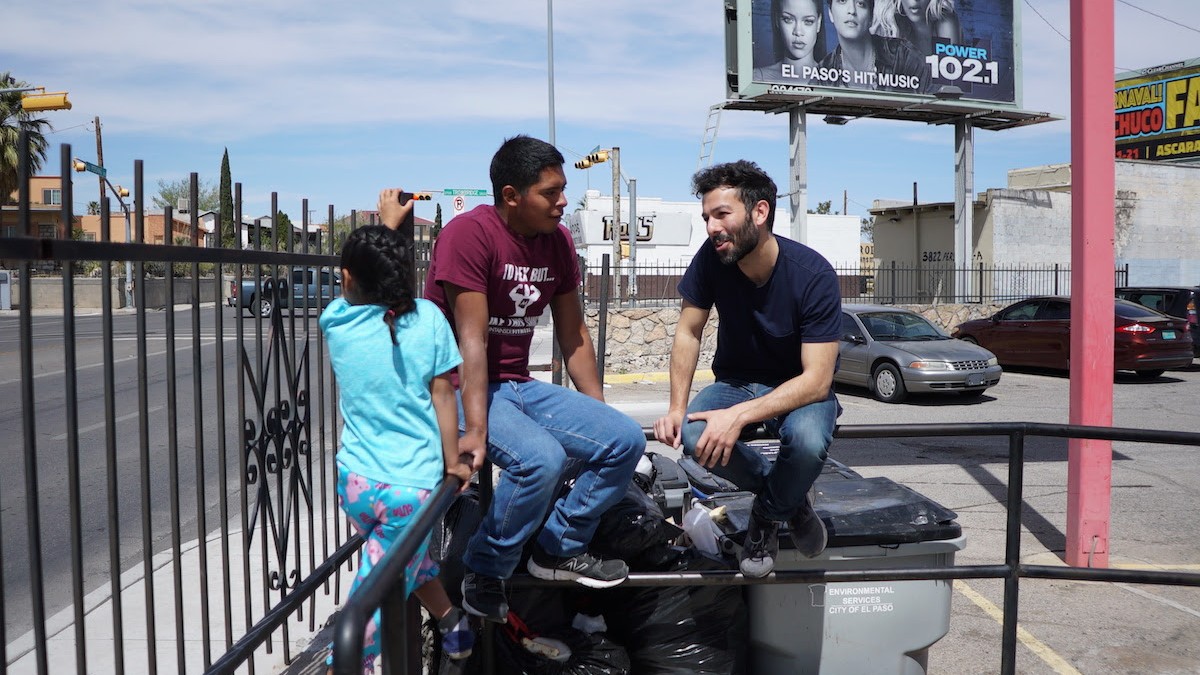Want the best of VICE News straight to your inbox? Sign up here.Fifteen-year-old Sergio Hernández was playing on the Mexican side of the U.S.-Mexico border in 2010 when a U.S. Border Patrol agent shot and killed him.Though his family filed a lawsuit against the agent, Jesus Mesa, for the teen’s death, federal prosecutors declined to charge Mesa with the crime. For families of foreign citizens killed or harmed by U.S. federal agents, there’s no clear recourse against those officers, particularly if the incident occurred outside U.S. borders.Now, the Supreme Court will have to decide whether the Hernández family has the right to sue Mesa –– and by extension, whether the families of victims killed by border officers outside the country have a way to pursue justice in the U.S.“The question for the Supreme Court is: Does the fact that Sergio was standing a few feet into Mexican territory mean that he did not have any legal rights that U.S. courts can enforce?” said César Cuauhtémoc García Hernández, an immigration law professor at the University of Denver. “That’s the prickly fact of life along the border.”But if the justices rule broadly against the Hernández family, the decision could effectively give border agents a near-unfettered ability to commit violence against non-U.S. citizens, especially those trying to cross the border.The case, Hernández v. Mesa, partly rests on a legal concept called “qualified immunity,” which protects some government officers, like police and immigration agents, from being sued over actions they take on the job. It’s intended to prevent frequent or frivolous lawsuits but also creates a significant hurdle for victims of state-sanctioned violence seeking justice, even citizens who have the full protections of the U.S. Constitution. Being undocumented only leads to more barriers.The Supreme Court ruled in 1971 that people can sue federal agents who violate a victim’s constitutional rights. But an appeals court in the Hernandez case previously ruled that it’s not “clearly established” that it’s unconstitutional for a border patrol officer to kill a Mexican citizen on Mexican soil.A lawyer representing the deceased teen’s family argued before the Supreme Court that it shouldn’t matter where Hernández was standing, particularly if there’s no other legal recourse for his family.During oral arguments in the case, Justice Sonia Sotomayor said the government’s defense would “create a class of border patrol agents, whether they shoot across the border or shoot in the border,” who can’t be sued for illegal conduct.Some of those people were attempting to cross the border into the U.S. Others, like Hernández, weren’t.During oral arguments on Nov. 12, the Hernández family’s lawyer argued that the very ability to hold law enforcement officers accountable for murder is at stake in the court’s outcome. In their brief to the court, the immigration advocacy organizations agreed, arguing that the Supreme Court is ultimately deciding whether border officers can kill with impunity.“Those who come after Sergio and their families will have no way of vindicating their Constitutional rights [or] deterring federal law enforcement officers from abusing their authority,” the immigration advocacy groups wrote.The court heard arguments in Hernández v. Mesa once before, in 2017, but sent the case back down to a lower court for further consideration. Justice Neil Gorsuch, who has proven one of the court’s most conservative justices, was confirmed to the Supreme Court after the justices heard arguments in the case and did not weigh in on the decision.The Trump administration has made a concerted effort to beef up the size of its border patrol force, to limited success. Although President Trump signed an order in 2017 to hire 15,000 more border agents and immigration officers, Border Patrol hired only 120 agents in 2018.“On the ground, the facts of this case are enormously significant in border communities around the Southwest,” García Hernández said. “The more police presence we have, the more tension in communities that straddle the border.” Cover image: Attorney Cristobal Galindo, second from left, speaks accompanied by Jesus Hernandez, left, and Maria Guereca, and attorney Marion Reilly after oral arguments in front of the Supreme Court, Tuesday, Nov. 12, 2019 in Washington. (AP Photo/Alex Brandon)
Cover image: Attorney Cristobal Galindo, second from left, speaks accompanied by Jesus Hernandez, left, and Maria Guereca, and attorney Marion Reilly after oral arguments in front of the Supreme Court, Tuesday, Nov. 12, 2019 in Washington. (AP Photo/Alex Brandon)
Advertisement
Advertisement
Hernández’s death wasn’t an isolated incident. At least 90 people have died between January 2010 and July 2019 at the hands of Border Patrol agents, according to a brief filed to the Supreme Court by a consortium of immigrant advocacy organizations. VICE News previously documented the stories of seven Mexican citizens killed in Mexico by Border Patrol agents stationed in the U.S. Of those cases, only one officer faced criminal charges.“That’s the prickly fact of life along the border.”
In fact, border agents regularly use deadly force against subjects who are “not capable of causing serious physical injury” to them, according to a review published in 2013 by the Police Executive Research Forum, a national nonprofit comprised of law enforcement officers and academics.In a brief filed with the Supreme Court supporting the plaintiffs, several immigrant advocacy organizations wrote that many more people than the 90 who were killed “have been brutalized, in some cases causing life-altering injuries, including a minor who was punched in the stomach and a pregnant woman who lost her unborn child after being beaten at a border crossing.”
Advertisement
